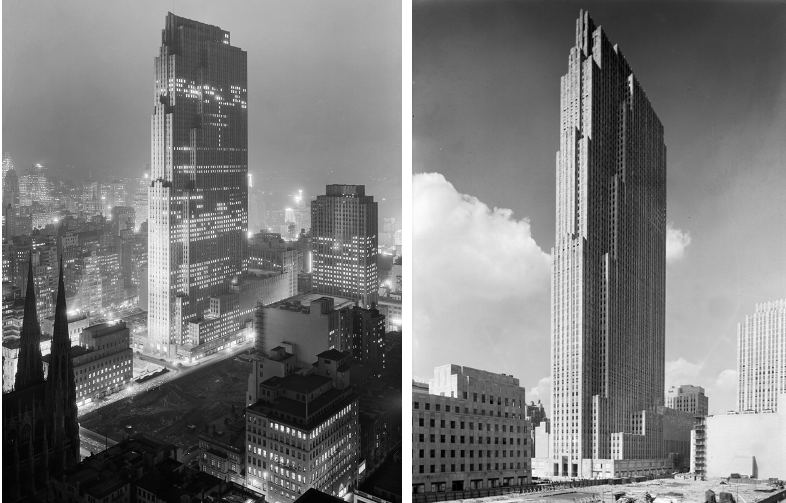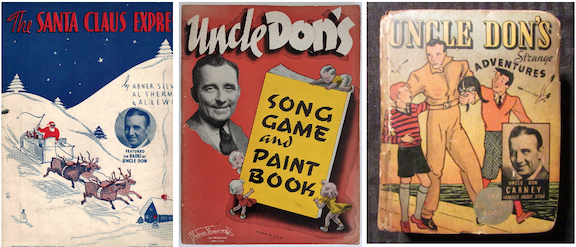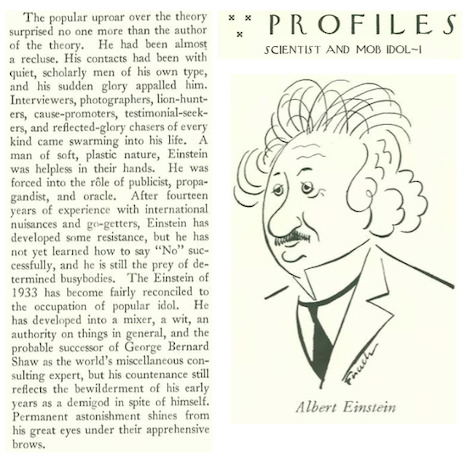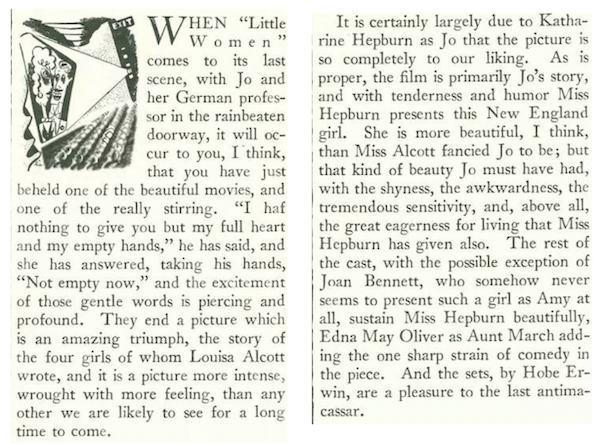When Rockefeller Center’s design was unveiled in 1931, New Yorker architecture critic Lewis Mumford wrote that it followed ”the canons of Cloudcuckooland.”

Today we know 30 Rock as one of the most iconic and beloved places in Manhattan, but after Mumford saw the plans for this future “Radio City” he went into exile in upstate New York, upset over the “weakly conceived, reckless, romantic chaos” of the project. Mumford wasn’t alone in his opinion; indeed it was his commentary that helped fuel negative reactions from citizens and newspapers alike.
No doubt the scale of the project bothered a lot of people, as it was slated to replace four- and five-story brownstones and other smaller buildings with a series of massive structures (for Mumford, it was rare that any skyscraper found his favor—to him they were oversized symbols of corporate tyranny).

As the Rockefeller Center towers rose, some softened their criticisms, including E.B. White—in the Dec. 9 issue he said he would eat his words after viewing the floodlit 30 Rock by night: “the whole thing swims up tremendously into the blue roxyspheres of the sky.”
Two weeks later, in his Dec. 23 “Sky Line” column, Mumford agreed that the floodlit buildings looked impressive, recalling Hugh Ferriss’ romantic, futuristic visions of the city; however, the darkness also concealed a decorative scheme that was ”bad with an almost juvenile badness.”


Having finished his excoriation of the buildings’ scale and placement, Mumford proceeded to carve up the ornamental features, including the sunken plaza (today an iconic site for ice skating), which he thought looked “a little silly” in relation to the mass of the RCA building.

Revisiting Rockefeller Center in his May 4, 1940 “Sky Line” column, Mumford wouldn’t exactly eat his words, but he did admit that the collection of structures formed “a composition in which unity and coherence have to a considerable degree diminished the fault of overemphasis. In other words, they get by.” Mumford still believed 30 Rock was too tall—he would have preferred 32 stories, less than half its actual size: “Good architecture is designed for the human beings who use or view the buildings, not for publicity men or photographers.”
I have to disagree. Every time I look up at 30 Rock I feel my heart soar.
* * *
Yule Like This
The Dec. 23 issue marked the return of Frank Sullivan’s annual holiday poem, “Greetings, Friends!” Sullivan published his first holiday poem in 1932 and faithfully continued the tradition until 1974; after his death in 1976, New Yorker editor William Shawn asked the late Roger Angell to take on the poem. In 2012 Angell passed the duty along to Ian Frazier, the magazine’s current Yuletide bard (Frazier’s latest poem can be found in the Dec. 26, 2022 issue).
* * *
Success, In Spite of it All
“The Talk of the Town” looked in on singer Ethel Waters, who apparently wasn’t brooding over the difficulties of her past life, given that she was seeing so much success as a recording artist and as a Broadway star in As Thousands Cheer. Although her material life was better, she still faced racism wherever she went, including on stage—although she received equal billing, she was segregated from her co-stars in As Thousands Cheer.

* * *
Enigma
Geoffrey T. Hellman examined the life of American entrepreneur Armand Hammer in a profile titled “Innocents Abroad.” Hammer’s business interests around the world helped him cultivate a wide network of friends and associates. Called “Lenin’s chosen capitalist” by the press, Hammer (1898-1990) started a pencil factory in the Soviet Union in 1926 and later became head of Occidental Petroleum. Throughout his career he maintained close ties with Soviet leaders—which raised many suspicions in the West—but Hammer also served as a citizen diplomat for the U.S., an important go-between during the Cold War. An excerpt:

* * *
From Our Advertisers
With Prohibition over, New Yorkers were looking forward to celebrating the holidays with Richard Himber and his orchestra at the Ritz-Carlton or enjoying a cocktail at the new Continental Grill and Bacchante Bar at the Hotel St. Moritz…
…and no less of an authority than Santa was advising shoppers to give tobacco products to their loved ones this holiday season…
…or perhaps you could be persuaded by elegant holiday wishes from the owners of Lucky Strike, who included their cigarettes among “the best of good things”…
…good living, apparently, could also be found in a bottle of Bud…
…or in American-distilled “London Dry Gin”…or in a pint of Guinness…
…our cartoons begin with Gardner Rea, and a course in mixology…
…Otto Soglow’s Little King found a surprise in his Christmas stockings…
…Helen Hokinson offered some passing holiday cheer…
…Mary Petty gave us this unusual Christmas seal…
…and from James Thurber, this earnest prayer…
…and we close with another prayer-themed cartoon from Jan. 4, 1982—Lee Lorenz, who died Dec. 8 at age 90, joined the New Yorker staff in 1958, the same year his first cartoon appeared in the magazine’s pages. He also served as art editor (1973–1993) and cartoon editor (1993–1997) for the New Yorker. Michael Maslin penned an appreciation on his Ink Spill site.
…Happy Holidays one and all, as we end with this GIF from Disney’s 1933 short, The Night Before Christmas…
…and this scene from December 1933, when Rockefeller Center decided to make the Christmas Tree an annual tradition and held the very first tree lighting ceremony…

Next Time: Happy New Year, 1934…






























































































































































